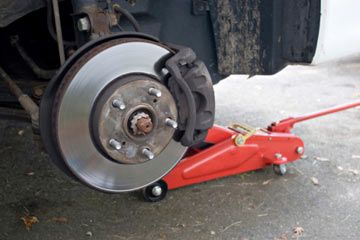The brakes on your car cause it to slow and stop by using friction. The brake pads press against the rotor or drum in the wheel, whether it's a drum brake or a disk brake. Using lubrication on a system that requires friction might seem like a bad idea, but the correct lubricants are crucial to proper brake function.
Of course, you never want to put lubricants of any kind on the friction surface of the brakes. That's where the stopping power comes from, and lubricant would cause your brakes to simply stop working. But brakes have lots of moving parts, and they all need to be well-lubricated to make sure everything works smoothly. Brake lubricants also keep your brakes from making squealing or screeching noises due to vibrations, and they reduce wear and tear so your brakes will last longer.
Advertisement
Lubricating brakes isn't just a matter of slathering some oil or grease. Special lubricants are required because of the conditions under which brakes operate. For one thing, brakes get very hot, with even moderate use. An ordinary lubricant would actually melt in these conditions, and could then run or splatter onto other parts of the brake system, including the rotor or pads. Slippery brake rotors won't work. Also, virtually all modern brake systems are hydraulic. Petroleum-based lubricants would make rubber and plastic seals deteriorate.
If you're getting ready to do a brake job, don't forget to buy the proper lubricants along with your new pads and rotors. For metal-on-metal lubrication, look for dry film lubricants containing either molybdenum disulfide or graphite. To lubricate areas with rubber or plastic components, use silicone-based or synthetic non-petroleum lubricants.
Now, let's get down to the business of explaining where to put the lubricants and how to apply them.
Advertisement




